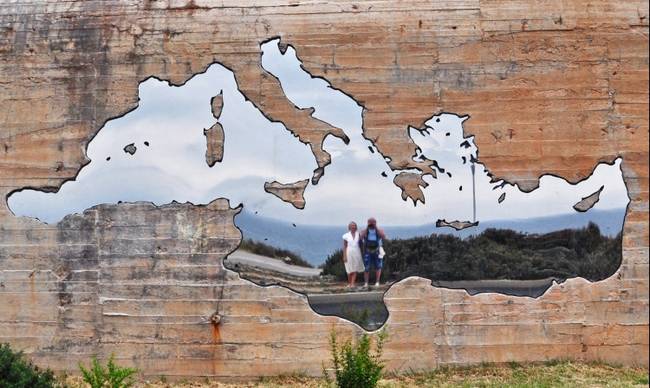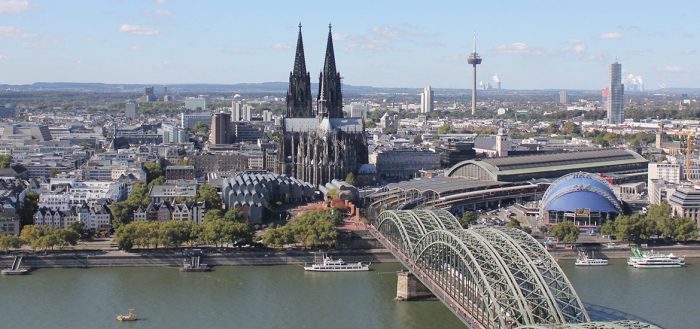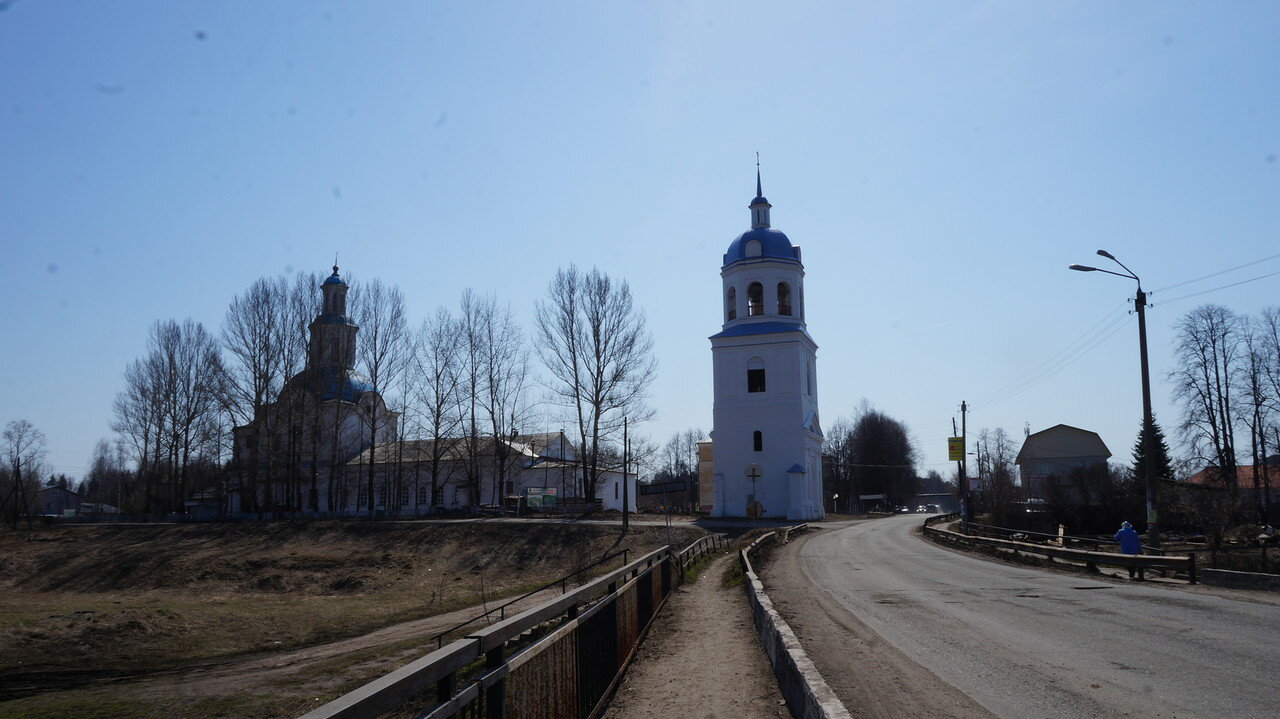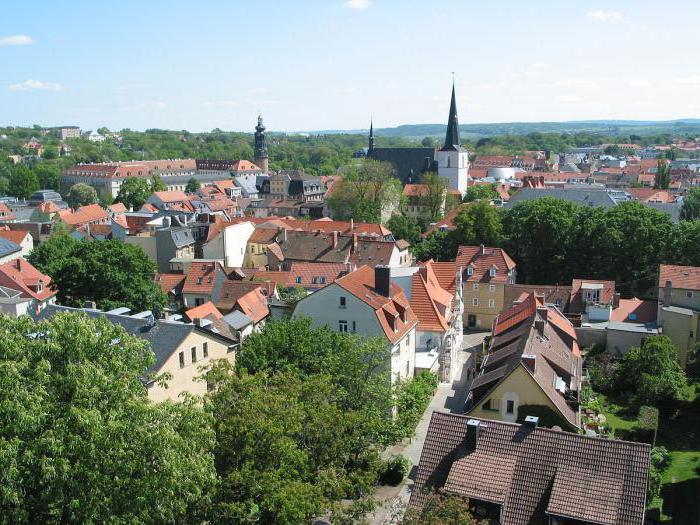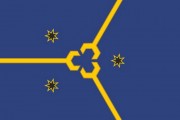 |
 |
 |
 |
|
Ромодановский район Мордовии. Ромоданово достопримечательности мордовияПоселок РомодановоКраткая информация о Ромоданово Регион: Республика Мордовия Район: Ромодановский район Тип: поселок GPS координаты: N 54° 24' 50.6664" E 45° 21' 19.5696" Телефонный код: 83438 Как позвонить из других стран Автомобильный код: 13 Почтовый индекс: 431602 Код ОКАТО: 89240551000 Текущее время в: 05:19 Разница во времени с Москвой: 0 ч. Население: 9 500 чел. Фотографии Ромоданово Добавить фото Были в Ромоданово и сделали снимки города и интересных мест? Разместите их! Многие посетители нашего сайта делают фото в своих поездках. Публикуйте свои фото из Ромоданово и из других городов! Отмечайте если Вы тоже видели эти места! Теперь появилась возможность добавления с мобильной версии сайта, что намного облегчает перенос фото из Ромоданово со смартфонов на сайт!Сувениры из Ромоданово Добавить сувенир Были в Ромоданово и привезли сувениры? Покажите их всем! Магнитики на холодильник, тарелки, вымпелы, кружки и все что Вы привозите с собой из командировок и поездок в Ромоданово! Размещайте и отмечайте если у вас уже есть такие ! Разместите их фото! С мобильной версии сайта это сделать намного проще и перенос фото магнитиков из Ромоданово со смартфонов на сайт будет удобнее!Последние вопросы Добавить вопрос Если у Вас есть вопросы по данному населенному пункту или Вы ищите людей из деревни Мокрецы, проживающих в нем, Вы можете задать задать соответсвующий вопрос. Надеемся, что наши пользователи помогут Вам с ответами. www.komandirovka.ru ✅Ромоданово Портал МордовииРомоданово - русск., рабочий поселок Ромодановского рабочего поссовета и района. Находится на реке Инсар. В "Списке населенных мест Пензенской губернии" (1869) Ромоданово (Никольское) - село владельческое из 128 дворов Саранского уезда. Название-антропоним: из "Жалованной грамоты царя Михаила Федоровича, данной стольнику князю Ивану Ивановичу Ромодановскому на пожалованные земли", видно, что в 1622 году Ромодановский получил 200 четей земли в деревне Кош-Помра Алатырского уезда. Географическое положение. Ромоданово расположено в лесостепных ландшафтах центральной части бассейна Инсара у железнодорожной станции Красный Узел. Через поселок проходит автодорога республиканского значения Саранск - Большое Игнатово. Территориальные аспекты развития. Планировочно территория Ромоданова рекой Инсар и железной дорогой разделена на три района - западный, центральный и восточный. Каждый из них имеет селитебную и производственную зоны. Застроен поселок в основном одноэтажными домами. Многоэтажные здания сосредоточены в западном районе, где исторически сложился центр поселка. Инженерно-геологические процессы. При хозяйственном освоении ландшафтов на локальных участках отмечается активизация оползневых и эрозионных процессов, в населенных пунктах - подтопление. По степени опасности превалируют средне- и слабооползнеопасные площади. Ресурсы подземных вод и водоснабжение. На территории района эксплуатируется верхнекаменноугольный водоносный горизонт. Согласно прогнозной оценке, эксплуатационные ресурсы подземных вод для Ромодановского района составляют 39,1-79,6 тыс. м3/сут, в состав которых входят пресные воды (30,3-51,7) и с минерализацией 1-1,5 г/дм3 (8,8-27,9 тыс. м3/сут). Современный водоотбор крупными потребителями не превышает 3,2 тыс. м3/сут. Текущая потребность в воде на хозяйственно-питьевые нужды 2,9 тыс. м3/сут. Перспективная потребность крупных потребителей 3,9 тыс. м3/сут, рассредоточенных - 5,7тыс. м3/сут. Минерализация извлекаемых вод увеличивается с запада на восток. По химическому составу воды сульфатно-хлоридно-гидрокарбонатные, хлоридно-гидрокарбонатно-сульфатные, гидрокарбонатно-хлоридно-cульфатные, хлоридно-гидрокарбонатно-сульфатные кальциево-натриевые, кальциево-магниево-натриевые, магниево-кальциево-натриевые, кальциево-натриево-магниевые. Общая жесткость составляет 5,2-10,9, устранимая - 3,7-7,4 ммоль/дм3. Содержание фтора 2,0 мг/ дм3. Ресурсы поверхностных вод. В гидрологическом отношении река Инсар в рассматриваемом створе полностью не изучена, имеются отрывочные сведения о ее режиме, но все они краткосрочны. Площадь водосбора реки в створе исследований составляет 2 213 км2. Средний многолетний годовой сток характеризуется следующими характеристиками: Q0 = 10,8 м3/с; W0 = 340,8 млн м3 в год; коэффициент вариации Сv = 0,22; коэффициент асимметрии Сs = 0,44. Основное количество годового стока приходится на весенний период. Лимитирующим периодом является летне-осенняя и зимняя межень, сток реки в эти периоды, т. е. его количественная характеристика, является минимальным, что осложняет работу промышленных и сельскохозяйственных предприятий, ухудшает экологическую обстановку. РОМОДАНОВО, поселок, районный центр, до революции село Саранского уезда Пензенской губернии. Русский поселок Ромоданово, в прошлом вотчина князей Ромодановских, насчитывает около 400 лет истории. За это время сменилось несколько храмов. Один из последних был перенесен на другое место из-за оползней на реке Инсар, но вскоре сгорел. В 1893 году ромодановцы начали возведение каменного храма, законченного в 1901 году и освященного в честь святителя Николая Чудотворца. В приход входили также деревни Тарбеевка, Каменка, Зоринка, а с начала ХХ века и жители пристанционного поселка Темирязево (Красный Узел), всего около 1500 человек. Храм был снесен в советское время. Возродившийся приход возобновил службу в приспособленном помещении (бывшем кинотеатре), освященном как Казанская церковь. При районной больнице в 2000 году освящена домовая церковь во имя святителя Луки (Войно-Ясенецкого). Закончено строительство нового каменного храма на площади при въезде в поселок (2011 г.). Литература: Пензенская епархия: Историко-статистическое описание. – Пенза, 1907, с. 274. БАХМУСТОВ Сергей Борисович ПРАВОСЛАВНЫЕ ПРИХОДСКИЕ ХРАМЫ МОРДОВИИ, Словарь-справочник, 2015. tourismportal.net Реферат Ромодановский район МордовииРеферат на тему: План:
ВведениеРомода́новский райо́н (эрз. Рамаданбуе, мокш. Ромодановань район) — муниципальное образование в Республике Мордовия. Административный центр — посёлок городского типа Ромоданово. 1. ГеографияРомодановский район расположен в восточной части Республики Мордовия, граничит с Починковским районом Нижегородской области. 2. ИсторияОбразован 16 июля 1928 года. 3. Население4. Административное устройствоВ состав района входят 1 городское:
и 17 сельских поселений:
5. ЭкономикаРайон преимущественно сельскохозяйственный. Неподалеку от райцентра Ромоданово расположен единственный в Мордовии сахарный завод. Также большую роль в экономике района играют ОАО «Элеком», железнодорожная станция Красный Узел. 6. ДостопримечательностиРомодановский район славен далеко за пределами Мордовии своими святынями — Свято-Тихвинским женским монастырем в селе Курилово и Свято-Троицким мужским монастырем в селе Большое Чуфарово. Сейчас в обеих обителях восстановлена служба. Примечания
wreferat.baza-referat.ru
ru.wikibedia.ru Ромоданово (Мордовия) - WikiVisually1. Россия – Russia, also officially the Russian Federation, is a country in Eurasia. The European western part of the country is more populated and urbanised than the eastern. Russias capital Moscow is one of the largest cities in the world, other urban centers include Saint Petersburg, Novosibirsk, Yekaterinburg, Nizhny Novgorod. Extending across the entirety of Northern Asia and much of Eastern Europe, Russia spans eleven time zones and incorporates a range of environments. It shares maritime borders with Japan by the Sea of Okhotsk, the East Slavs emerged as a recognizable group in Europe between the 3rd and 8th centuries AD. Founded and ruled by a Varangian warrior elite and their descendants, in 988 it adopted Orthodox Christianity from the Byzantine Empire, beginning the synthesis of Byzantine and Slavic cultures that defined Russian culture for the next millennium. Rus ultimately disintegrated into a number of states, most of the Rus lands were overrun by the Mongol invasion. The Soviet Union played a role in the Allied victory in World War II. The Soviet era saw some of the most significant technological achievements of the 20th century, including the worlds first human-made satellite and the launching of the first humans in space. By the end of 1990, the Soviet Union had the second largest economy, largest standing military in the world. It is governed as a federal semi-presidential republic, the Russian economy ranks as the twelfth largest by nominal GDP and sixth largest by purchasing power parity in 2015. Russias extensive mineral and energy resources are the largest such reserves in the world, making it one of the producers of oil. The country is one of the five recognized nuclear weapons states and possesses the largest stockpile of weapons of mass destruction, Russia is a great power as well as a regional power and has been characterised as a potential superpower. The name Russia is derived from Rus, a state populated mostly by the East Slavs. However, this name became more prominent in the later history, and the country typically was called by its inhabitants Русская Земля. In order to distinguish this state from other states derived from it, it is denoted as Kievan Rus by modern historiography, an old Latin version of the name Rus was Ruthenia, mostly applied to the western and southern regions of Rus that were adjacent to Catholic Europe. The current name of the country, Россия, comes from the Byzantine Greek designation of the Kievan Rus, the standard way to refer to citizens of Russia is Russians in English and rossiyane in Russian. There are two Russian words which are translated into English as Russians 2. Мордовия – The Republic of Mordovia, also known in English as Mordvinia, is a federal subject of Russia. Its capital is the city of Saransk, as of the 2010 Census, the population of the republic was 834,755. Ethnic Russians and Mordvins account for the majority of the population, the republic is located in the eastern part of the East European Plain of Russia. The western part of the republic is situated in the Oka-Don Plain, its eastern, major rivers include, Alatyr River Issa River Moksha River Satis River Sivin River Sura River Vad River There are approximately five hundred lakes in the republic. Natural resources include peat, mineral waters, and others, finno-Ugric Mordvins are mentioned in written sources in 6th century. Later, Mordvins were under the influence of both Volga Bulgaria and the Kievan Rus, Mordvin princes sometimes raided Muroma and Volga Bulgaria, and often despoiled each others holdings. The Mongols conquered vast areas of Eastern Europe in the 13th century and they established the khanate of the Golden Horde in 1241, subjugating the area of Mordovia. Mordvins fought against Mongols and later alongside Russians, Mordvin lands territorially belonged to Mukhsha Ulus. The Golden Horde disintegrated in the 1430s, which resulted in some Mordvins becoming subjects of the Khanate of Kazan, when Ivan IV of Russia annexed the Khanate of Kazan in 1552, the Mordvin lands were subjugated to the Russian tsars. The Mordvin elite rapidly adopted Russian language and customs, whereas 1821 saw the publication of the New Testament in Erzya to address the non-elite population, in rural areas, Mordvin culture was preserved. Russians started to convert Mordvins to Orthodox Christianity in the mid-18th century, Mordvins gave up their own shamanist religion only slowly, however, and many of shamanist features were preserved as parts of local culture though the population became nominally Christian. Translations of literature to Mordvin languages were mostly religious books, in the 18th century, the Latin alphabet was used in writing Mordvin, but from the mid-19th century, Cyrillic was used. During the Russian revolution and civil war, Mordovia was held by Bolsheviks from the beginning of the war, when the Bolsheviks prevailed in the war, Mordovia became a part of the Russian SFSR. In 1925, the Soviet government founded autonomous districts and village councils in the area of the Mordvins, during the Soviet era, two written languages were developed, one based on the Erzya dialect in 1922 and one on the Moksha dialect in 1923, both using Cyrillic script. The Mordovian Okrug was founded on July 16,1928, the autonomous oblast was transformed into the Mordovian Autonomous Soviet Socialist Republic on December 20,1934. When the Soviet Union disintegrated, the Mordovian ASSR proclaimed itself the Republic of Mordovia in 1990, the Republic of Mordovia in its present form has existed since January 25,1994. The supreme law is the Constitution of the Republic of Mordovia, in a wave of sovereignty common among other former Russian autonomous republics, Mordovia established a presidency in 1991. In that same year, Vasilly Guslyannikov, a physicist by training, was elected in the general election, Guslyannikov had previously been a senior researcher at the Institute of Power Electronics and was the leader of the republican branch of the Democratic Russia political movement 3. Ромодановский район – Romodanovsky District is an administrative and municipal district, one of the twenty-two in the Republic of Mordovia, Russia. It is located in the central part of the republic. The area of the district is 820.8 square kilometers and its administrative center is the rural locality of Romodanovo. As of the 2010 Census, the population of the district was 20,702. Within the framework of administrative divisions, Romodanovsky District is one of the twenty-two in the republic, the district is divided into seventeen selsoviets which comprise forty-nine rural localities. As a municipal division, the district is incorporated as Romodanovsky Municipal District and its seventeen selsoviets are incorporated into seventeen rural settlements within the municipal district. The settlement of Romodanovo serves as the center of both the administrative and municipal district. «Конституция Республики Мордовия », в ред, Закона №62-З от3 сентября2015 г. «О внесении изменений в статьи71 и94 Конституции Республики Мордовия», Вступил в силу22 сентября1995 г. Опубликован, Известия Мордовии, №180,22 сентября1995 г, Закон №7-З от23 марта1998 г. «О порядке решения вопросов административно-территориального устройства Республики Мордовия», в ред, Закона №44-З от15 июня2015 г. «О внесении изменений в пункт25 Приложения к Закону Республики Мордовия О порядке решения вопросов административно-территориального устройства Республики Мордовия», Вступил в силу со дня официального опубликования. Опубликован, Известия Мордовии, №54,25 марта1998 г, Закон №99-З от1 декабря2004 г. Закона №25-З от2 апреля2014 г, «О преобразовании административно-территориальной единицы, преобразовании муниципального образования и внесении изменений в некоторые Законы Республики Мордовия». Вступил в силу по истечении10 дней со дня официального опубликования, Опубликован, Известия Мордовии, №185-19,7 декабря2004 г 4. Москва – Moscow is the capital and most populous city of Russia, with 13.2 million residents within the city limits and 17.8 million within the urban area. Moscow has the status of a Russian federal city, Moscow is a major political, economic, cultural, and scientific center of Russia and Eastern Europe, as well as the largest city entirely on the European continent. Moscow is the northernmost and coldest megacity and metropolis on Earth and it is home to the Ostankino Tower, the tallest free standing structure in Europe, the Federation Tower, the tallest skyscraper in Europe, and the Moscow International Business Center. Moscow is situated on the Moskva River in the Central Federal District of European Russia, the city is well known for its architecture, particularly its historic buildings such as Saint Basils Cathedral with its brightly colored domes. Moscow is the seat of power of the Government of Russia, being the site of the Moscow Kremlin, the Moscow Kremlin and Red Square are also one of several World Heritage Sites in the city. Both chambers of the Russian parliament also sit in the city and it is recognized as one of the citys landmarks due to the rich architecture of its 200 stations. In old Russian the word also meant a church administrative district. The demonym for a Moscow resident is москвич for male or москвичка for female, the name of the city is thought to be derived from the name of the Moskva River. There have been proposed several theories of the origin of the name of the river and its cognates include Russian, музга, muzga pool, puddle, Lithuanian, mazgoti and Latvian, mazgāt to wash, Sanskrit, majjati to drown, Latin, mergō to dip, immerse. There exist as well similar place names in Poland like Mozgawa, the original Old Russian form of the name is reconstructed as *Москы, *Mosky, hence it was one of a few Slavic ū-stem nouns. From the latter forms came the modern Russian name Москва, Moskva, in a similar manner the Latin name Moscovia has been formed, later it became a colloquial name for Russia used in Western Europe in the 16th–17th centuries. From it as well came English Muscovy, various other theories, having little or no scientific ground, are now largely rejected by contemporary linguists. The surface similarity of the name Russia with Rosh, an obscure biblical tribe or country, the oldest evidence of humans on the territory of Moscow dates from the Neolithic. Within the modern bounds of the city other late evidence was discovered, on the territory of the Kremlin, Sparrow Hills, Setun River and Kuntsevskiy forest park, etc. The earliest East Slavic tribes recorded as having expanded to the upper Volga in the 9th to 10th centuries are the Vyatichi and Krivichi, the Moskva River was incorporated as part of Rostov-Suzdal into the Kievan Rus in the 11th century. By AD1100, a settlement had appeared on the mouth of the Neglinnaya River. The first known reference to Moscow dates from 1147 as a place of Yuri Dolgoruky. At the time it was a town on the western border of Vladimir-Suzdal Principality 5. Саранск – Saransk is the capital city of the Republic of Mordovia, Russia, as well as its financial and economic center. It is located in the Volga basin at the confluence of the Saranka and Insar Rivers, the Russian fortress Atemar, founded in 1641, took its name from a nearby Mordvin village, at the time the fortress stood on the southeastern frontier of the Tsardom of Russia. The current name, Saransk, refers to the situation on the Saranka river. Soon after its founding, the city became an important trade center for nearby Erzya villagers, after 1708 Saransk was assigned to Azov Province, and later to the Kazan Governorate. In 1780 the settlement was granted town status and was again transferred, in 1928 Saransk become the administrative center of the newly established Mordvin National Okrug, which became the Mordovian Autonomous Oblast in 1930. Soviet planners reconstructed the old city center in the 1960s and 1970s, adding wide streets, Saransk is the capital of the republic. As a municipal division, the city of republic significance of Saransk is incorporated as Saransk Urban Okrug, Saransk has a relatively chilly version of the humid continental climate with warm but not hot summers and cold winters, that averages well below freezing for five months of the year. Transition periods are short and only April and October are between 0 °C and 10 °C in mean temperatures. Industrial activity in Saransk includes the production of cables, chemical production, textile manufacturing, food processing, machine building. The city has two power stations. The city has the confectionery plant Lamzur, Saransk is by far the largest city in Mordovia and accounts for 34. 3% of the total population of the republic. Ethnic Russians form the majority of the population, and Russian, the population started to grow again in 2009. The city is home to Mordovian State University as well as several technical colleges. Saransk has three Orthodox Churches and also a small Lutheran Church provided by the Finnish Lutheran Church and opened in 2005, the main cathedral in Saransk is Cathedral of St. Theodore Ushakov, which was completed in 2006. The first theatrical season was opened with the plays «Poverty is No Vice» by Alexander Ostrovsky, the plays were directed by Nina Grigorskaya and Boris Brilliantov, the directors of the Maly Theatre. During the World War II it was free for everyone who wanted to come, the most popular plot was the Russian Civil War. Since 1950-s the theatre has presented mostly the classical Russian plays, such as «Anna Karenina», since 2006 the theatre has hosted the International festival «Compatriots». Now it is situated in Sovetskaya Street,60, the present director of the theatre is Sergey Igonkin wikivisually.com
wikiredia.ru |
| © vpoisketurov.ru (СЃ) 2022 Предложения лучших туроператоров |
